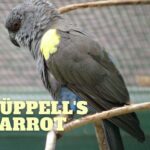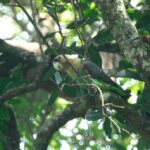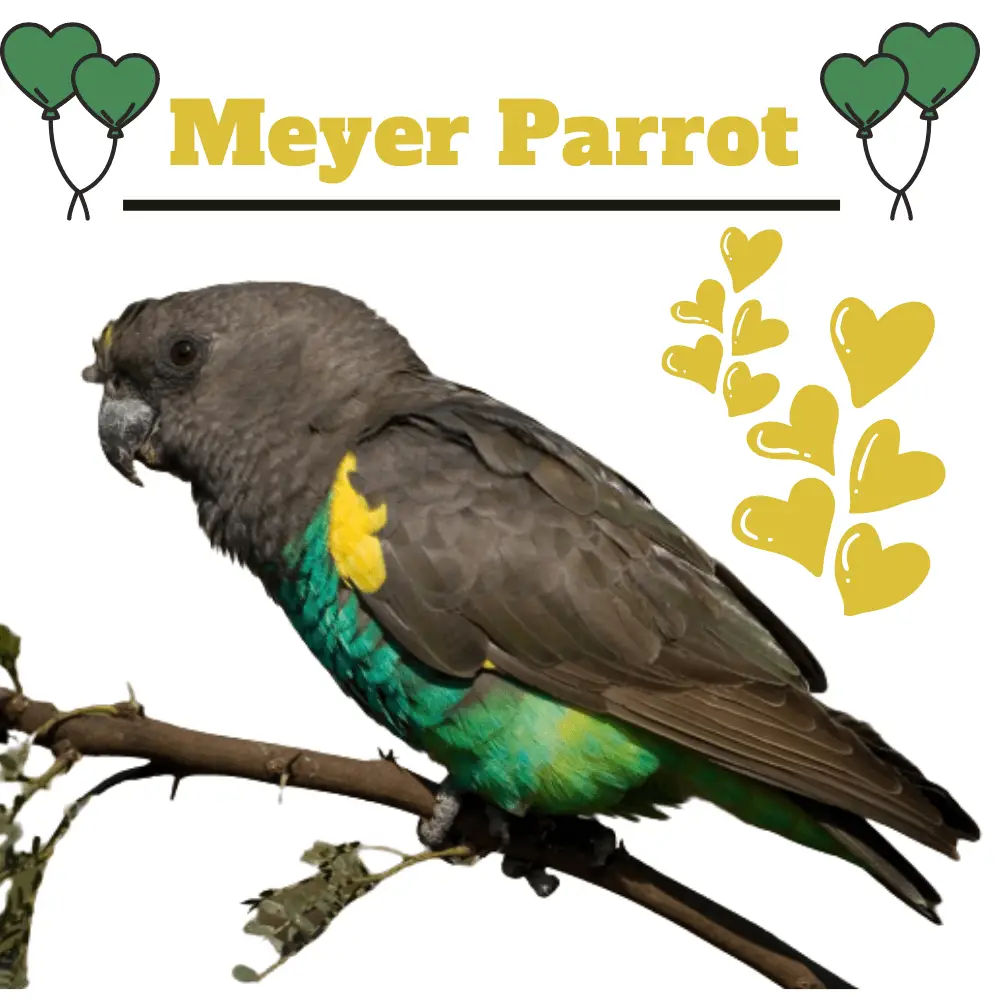
Identification
Underwing-coverts yellow. Immature lacks yellow markings. Race saturatus darker, matschiei with bluer tinging to green, transvaalensis bluer still and smaller, reichenowi like matschiei but large with no yellow on crown, damarensis like matschiei but large.
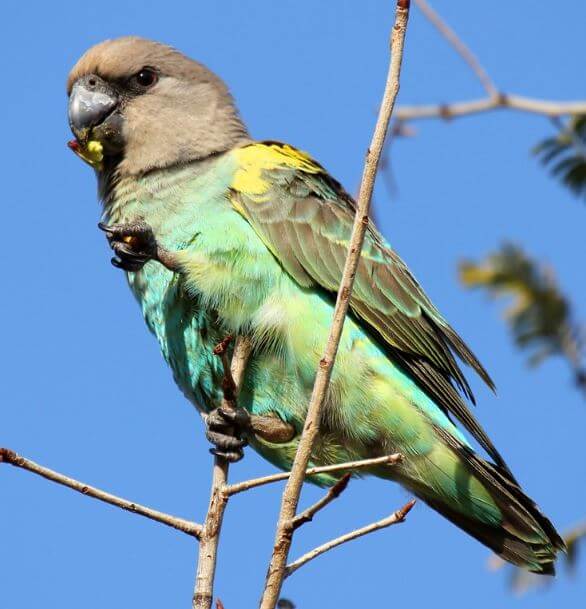
Systematics History
Editor’s Note: This article requires further editing work to merge existing content into the appropriate Subspecies sections. Please bear with us while this update takes place.
Thought to form a species group with P. rueppellii, P. cryptoxanthin and P. Crassus, and possibly others. Believed to hybridize with P. cryptoxanthin in SE Zimbabwe.
Subspecies
Poicephalus meyeri meyeri Scientific name definitions
Distribution
Poicephalus meyeri saturatus Scientific name definitions
Distribution
Poicephalus meyeri matschiei Scientific name definitions
Distribution
Poicephalus meyeri reichenowi Scientific name definitions
Distribution
Poicephalus meyeri damarensis Scientific name definitions
Distribution
Poicephalus meyeri transvaalensis Scientific name definitions
Distribution
Distribution
Editor’s Note: Additional distribution information for this taxon can be found in the ‘Subspecies’ article above. In the future, we will develop a range-wide distribution article.
Habitat
A wide range of open woodland and riparian habitats, with obligate proximity to water in Angola and were sympatric with P. rufiventris use riverine forest not open savanna, although in drier areas than P. cryptoxanthin in Mozambique.

Mixed lowland short- and tall-grass savanna, including those types dominated by Terminalia laxiflora and Isoberlinia Doka, Combretum bushlands and Acacia tortilis grassland, plus Syzygium-Adina riparian woodland, gallery forest,
Daisy and Duke Meyers Parrots
SOURCE: Rita Garris
Brachystegia woodland along watercourses, riverine Acacia. In Darfur, Sudan, abundance is linked to Acacia albida, and this species and A. nigrescens are also favored in South Africa. 600–2200 m in E Africa, 900–1350 m in Malawi.
Movement
Resident, although local movement or nomadism occurs, Botswana and South Africa.
Diet and Foraging
Meyer Parrot eats Fruits of large riverine trees such as Afzelia quanzensis, Melia volkensii, and Ficus sycomorus; seen excavating the large fruits of Kigelia Africana; also figs, marulas, and is fond of cultivated oranges.
Seed pods of trees, particularly the green pods of several Acacia species; only birds noted to feed on seeds of Brachystegia and other leguminous trees in miombo woodland.
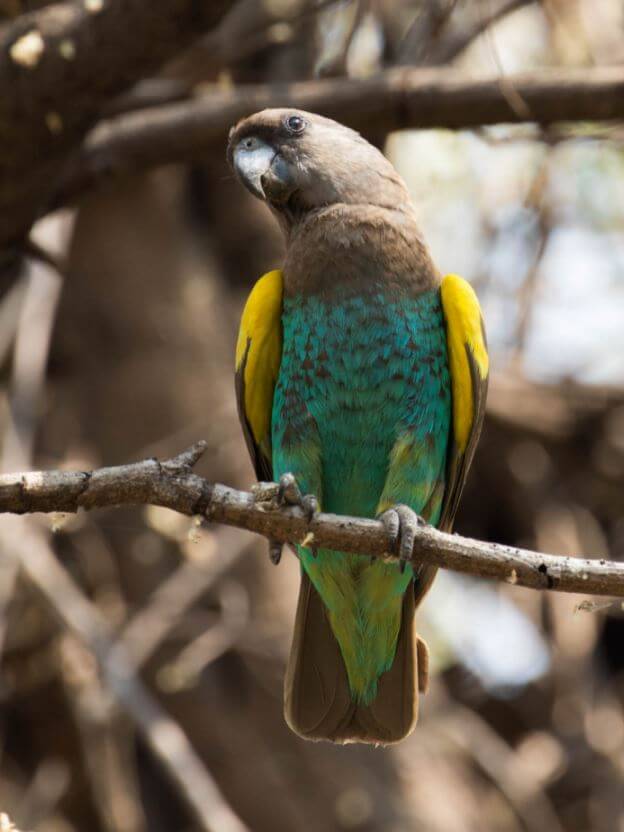
Other food plants include Ziziphus abyssinica, Uapaca nitidula, Montes glaber, Combretum, Grewia, Sclerocarya, Pseudolachnostylis, and Schotia. Reported raiding grain fields, and recorded as taking caterpillars and other insects.
In the Okavango Delta, Botswana, the diet comprises 71 food items from 37 tree species in 16 families, the most used trees being Kigelia Africana, Diospyros mespiliformis,
Meyer’s Parrot, The Best Pet Parrot?
SOURCE: Five’s A Flock with Coro
Combretum imberbe, and Ficus sycomorus; the species can be considered to be an opportunistic generalist that tracks resource availability across a wide suite of potential food items.
Meyer parrot talking
Meyer Parrot Calls are high-pitched, predominantly up slurred and under slurred, piercing, short whistles such as “kweet!” or “kwee-oo-eet”. Also utters various screeches and squawks.
Breeding meyers parrots
Apr–Oct in Ethiopia, and similarly extended, patchily Feb–Dec in E Africa; Meyer Parrot nests with young in Jan in Sudan; May-Sept in Angola; Apr-May in Botswana; Jun in Malawi; Jan–Aug, chiefly Apr–May, in Zimbabwe; Mar-Jun in South Africa.
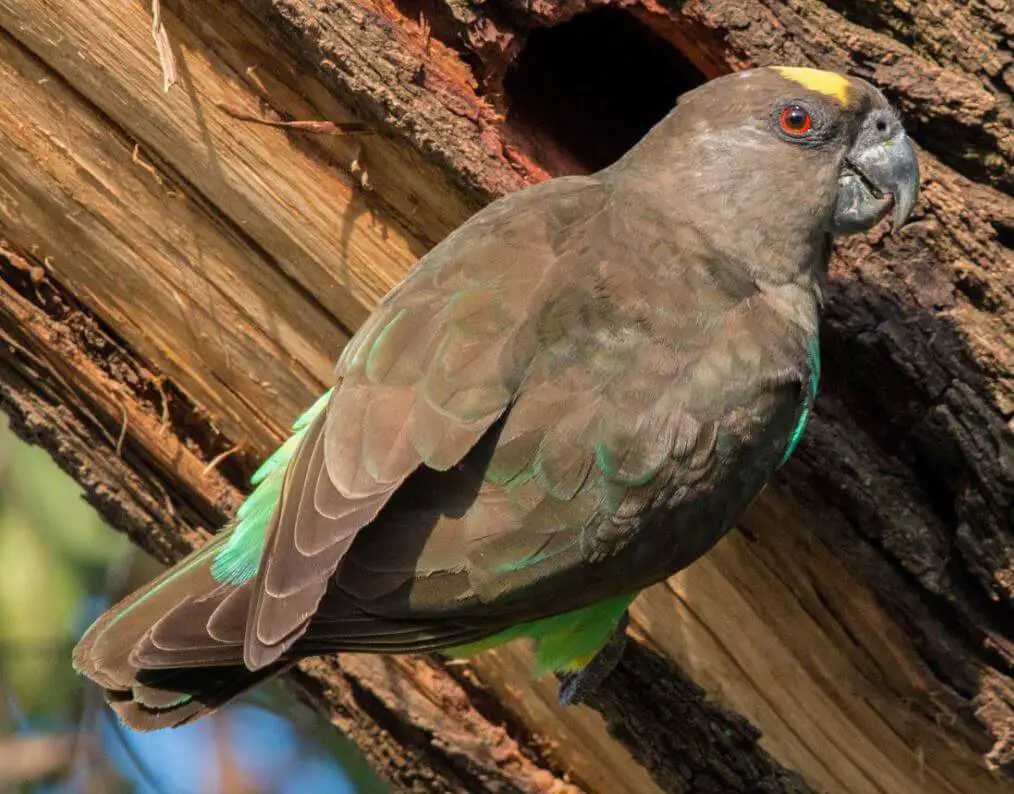
Commonly uses old woodpecker holes, usually in vertical trunks at 3–7 m, with use continuing in successive years. Meyer Parrot Eggs 2–4, probably staggered; incubation 29–31 days; fledging 60–84 days.
Meyer parrot as pet
SOURCE: Rita Garris
Meyer parrot lifespan
Commonly found in Africa and a relatively calm species of meyer parrot, these parrots live for 25 to 30 years
Meyer parrot price
The Meyer’s Parrot is a good choice for anyone hesitant to adopt a large-bodied species. In addition, its price is not very high, around 400$ on average, an additional advantage which probably also partly explains its success.
Conservation Status
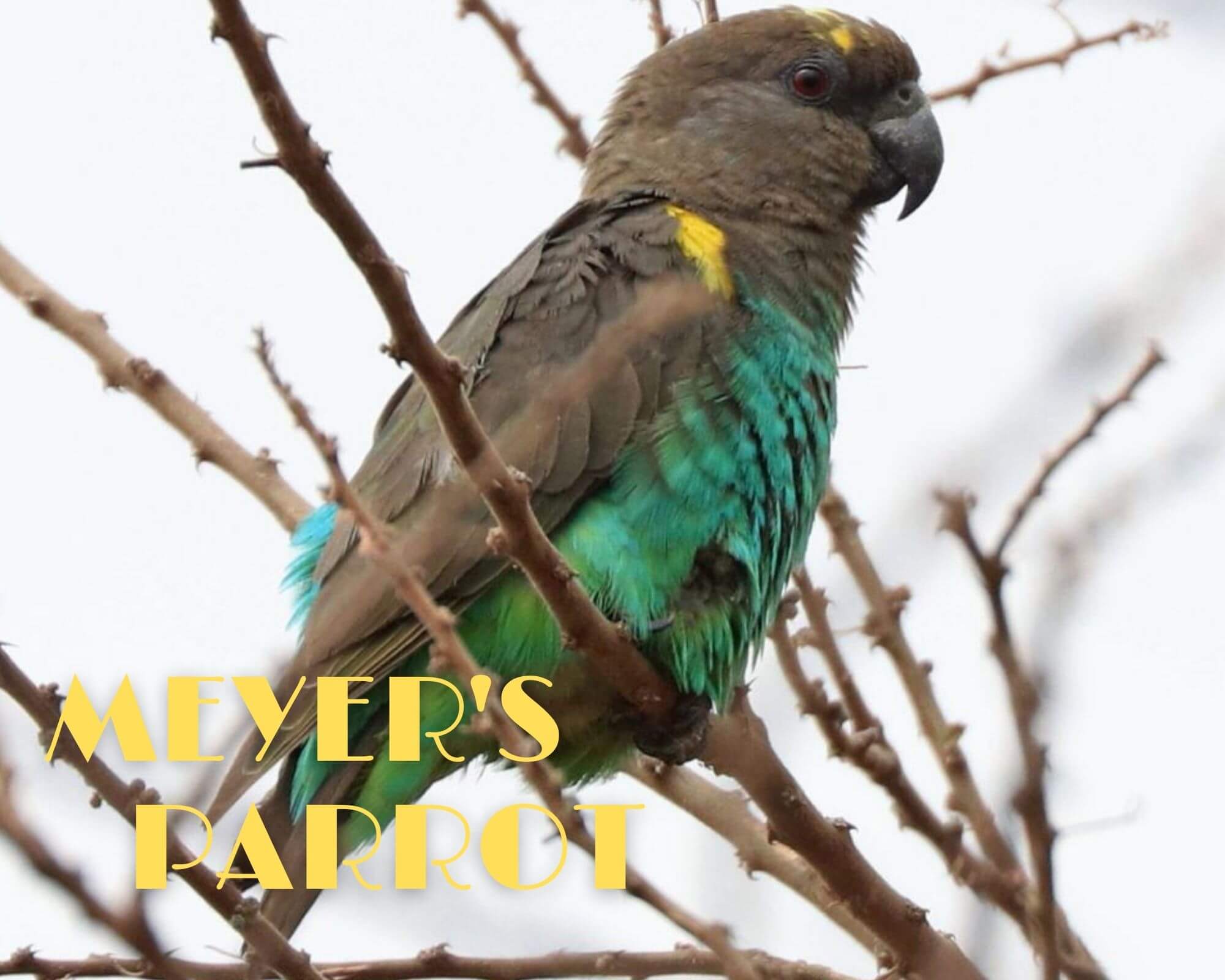
Not globally threatened (Least Concern). CITES II. Common, NE Central African Republic, where present (breeding) and common in Manovo-Gouda-St Floris and Bamingui-Bangoran National Parks. Very common, W Darfur; fairly common elsewhere, Sudan.
Common breeding resident, C Kenya. Seen daily, Ajai’s Game Reserve, Uganda. Present but uncommon in Serengeti National Park, Tanzania.
In Zambia and Malawi fairly common locally, while in Zimbabwe it is the only widespread and common parrot, but snared by local tribesmen, Middle Zambezi, because of the damage it does to ripening Ziziphus berries, an important human food.
Common, N Botswana, sparser in E. The commonest parrot in Angola was considered a crop pest, and present in Kangandala National Park and Giant Sable Strict Nature Reserve.
Generally scarce and localized, Transvaal, and much less widespread and numerous than in last century; formerly notorious there for damage to orange orchards, also eating grain and taking maize from cobs.

